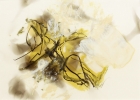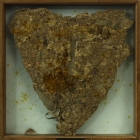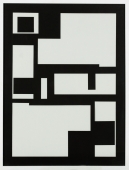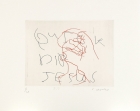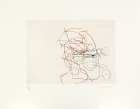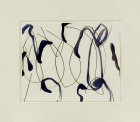
Artist | Konstanze Sailer (*1965)
https://www.artist-info.com/artist/Konstanze-Sailer
 Artist Portfolio Catalog
Artist Portfolio Catalog
| Image | Artist | Title | Year | Material | Measurement | ||||||||||||||||||||
|---|---|---|---|---|---|---|---|---|---|---|---|---|---|---|---|---|---|---|---|---|---|---|---|---|---|
 |
Konstanze Sailer | Skeletat 10 | 1999 | Oil on canvas | 200 x 200cm | ||||||||||||||||||||
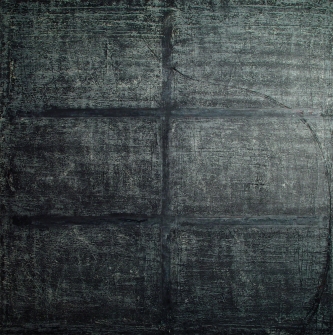
Konstanze Sailer (*1965)Skeletat 10
|
|||||||||||||||||||||||||
 |
Konstanze Sailer | Skeletat 2 | 1998 | Oil on canvas | 200 x 200cm | ||||||||||||||||||||
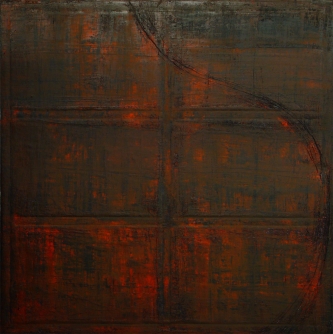
Konstanze Sailer (*1965)Skeletat 2
|
|||||||||||||||||||||||||
 |
Konstanze Sailer | Skeletat 11 | 1999 | Oil on canvas | 150 x 150cm | ||||||||||||||||||||
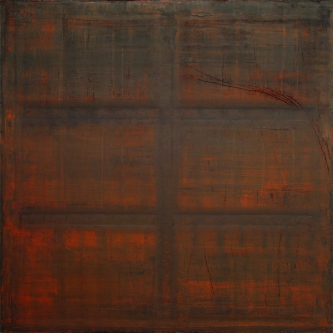
Konstanze Sailer (*1965)Skeletat 11
|
|||||||||||||||||||||||||
 |
Konstanze Sailer | Skeletat 12 | 1999 | Oil on canvas | 170 x 170cm | ||||||||||||||||||||
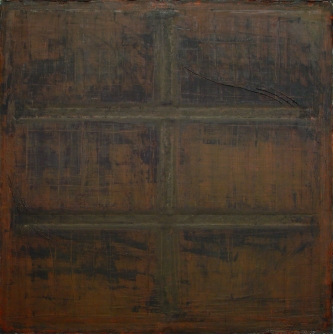
Konstanze Sailer (*1965)Skeletat 12
|
|||||||||||||||||||||||||
SKELETAT: Heads, Portraits, Countenance and Skulls
SKELETAT: Heads, Portraits, Countenance and Skulls
Skeletat and Double Cross Heads and skulls are inscribed in double crosses, engraved, piled up powerfully in numerous layers of paint and removed carefully. Lines and furrows are inscribed in the surfaces of paintings, showing traces of eroded countenances. Fragmentary shapes of skulls remind us of bygone times, questioning their former lives – Skeletat. The oil paintings of Konstanze Sailer originate from the phonematic series Skeletat, a sequence of head-paintings, of skulls and countenances stretching over a decade, whose abstractions and fragments describe a once vibrant life. Stable double crosses support and hold their shapes. With their double crossbars, these crucifixes remind us of the Patriarchal Cross of the Cardinals. There are many shapes of crosses in the history of Christianity. One of these is St. Peter's Cross - also called Papal Cross - with three crossbars near the top. Those with two crossbars are the Patriarchal cross, also called the Archiepiscopal cross and the old Croix de Lorraine. The original Croix d' Anjou, which dates back to the 13th century, had crossbars of equal length near the top and the bottom and it was not until 1500 that it showed crossbars of unequal length. The old cross, also called the Vraie Croix, was a relic that found its way from the Holy Land to Constantinople and Crete and finally in 1244 to France, to the Cistercian Abbey Boissière in Anjou. It was the time of the Crusades. The cross shape dates back some 20.000 years, according to archeological evidence, crosses have been symbols containing religious significance since 5.000 BC, both as symbols and ritual objects. They had been and still are approximations to a universal formula, their horizontal bar representing earth and the ascending arm referring to transcendence. The mysticism of the Middle Ages with their unmediated view of cosmology becomes perceptible in the paintings of Konstanze Sailer. Life and death are no abstractions, but tangible reality of life in the entire wealth of an archaic commotion of the world. Both crossbars encounter each other in the Skeletats: one arm stands for the sacrificial death of Christ; the other represents the plaque nailed to the cross. Texts illuminate views and visions. They allow access to the mysteries and draw bows through centuries. Blazing crimson and earthy colorations define the boundaries, within which the skulls are being protected by double crosses. Ulrich Lang
 Exhibition Announcements Exhibition Announcements 
| Learn more about this service |
|---|
 offers / Requests offers / Requests  |
Learn more about this service |
|---|
 Visualization |
Learn more about this service | ||
|---|---|---|---|

Interested in discovering more of this artist's networks?
3 easy steps: Register, buy a package for a visualization, select the artist.
See examples how visualization looks like for an artist, a curator, or an exhibition place: Gallery, museum, non-profit place, or collector.

Exhibition History

|
SUMMARY based on artist-info records. More details and Visualizing Art Networks on demand. Venue types: Gallery / Museum / Non-Profit / Collector |
||||||||||||
| Exhibitions in artist-info | 8 (S 3/ G 5) |
Did show together with - Top 5 of 16 artists (no. of shows) - all shows - Top 100
|
||||||||||
| Exhibitions by type | 8: 8 / 0 / 0 / 0 | |||||||||||
| Venues by type | 3: 3 / 0 / 0 / 0 | |||||||||||
| Curators | 0 | |||||||||||
| artist-info records | Sep 1998 - Sep 2014 | |||||||||||
|
Countries - Top 3 of 3 Netherlands (4) Germany (3) United States (1) |
Cities 3 - Top of 3 Amsterdam (4) München (3) New York (1) |
Venues (no. of shows )
Top 3 of 3
|
||||||||||
|
Curators (no. of shows)
Top 0 of 0 |
| Galerie Christoph Dürr - München | S | Aug 2014 - Sep 2014 | München | (42) | +0 | |
| Galerie Christoph Dürr - München | G | Jul 2012 - Aug 2012 | München | (42) | +0 | |
| Galerie Christoph Dürr - München | S | Dec 2008 - Dec 2008 | München | (42) | +0 | |
| Galerie Jos Art | G | Apr 2008 - May 2008 | Amsterdam | (47) | +0 | |
| Galerie Jos Art | G | Sep 2005 - Nov 2005 | Amsterdam | (47) | +0 | |
| Galerie Jos Art | G | Mar 2003 - Apr 2003 | Amsterdam | (47) | +0 | |











